- Home
- Bobby Akart
Economic Collapse (Prepping for Tomorrow Book 2) Page 3
Economic Collapse (Prepping for Tomorrow Book 2) Read online
Page 3
One scenario is a repeat of the solar storm as big as the 1859 Carrington Event. A solar event of this magnitude hasn't struck the earth since, although there have been smaller ones. In 1989, a coronal mass ejection caused a blackout across parts of Canada, especially in Quebec. As a result of complications across the interconnected grid, a large transformer in New Jersey permanently failed.
In 2003, residents of the northeastern United States experienced a grid down scenario. It doesn't take an unprecedented solar flare to knock out power. The combination of a few trees touching power lines, and a few power companies asleep at the wheel, plunged a section of the nation into darkness. The darkness can spread. As the difficulties at Ohio-based FirstEnergy grew and eventually cascaded over the grid, electrical service from Detroit to New York City was lost. The 2003 event was a comparatively minor episode compared to what might have happened. Most customers had their power back within a couple of days, and the transformers were relatively unaffected.
Compare this event with the incident in Auckland, New Zealand. Cables supplying power to the downtown business district failed in 1998. The center of the city went dark. Companies were forced to shutter or relocate their operations outside the affected area. The local Auckland utility had to adopt drastic measures to move in temporary generators. They even enlisted the assistance of the world's largest cargo plane—owned by rock band U2, to transport massive generators into the area. It took five weeks for the power grid to be fully restored.
There are contrarians. Jeff Dagle, an electrical engineer at the Pacific Northwest National Laboratory who served on the Northeast Blackout Investigation Task Force, argues "one lesson of the 2003 blackout is that the power grid is more resilient than you might think."
The task force investigators pinpointed four separate root causes for the collapse, and human error played a significant role. "It took an hour for it to collapse with no one managing it," Dagle said. "They would have been just as effective if they had just gone home for the day. That to me just underscores how remarkably stable things are."
As Congress raised awareness, the National Academies of Science produced a report detailing the risk of a major solar event. The 2008 NAS report paints a dire picture based on a study conducted for FEMA and Electromagnetic Pulse Commission created by Congress.
While severe solar storms do not occur that often, they have the potential for long-term catastrophic impacts to the nation's power grid. Impacts would be felt on interdependent infrastructures. For example, the potable water distribution will be affected immediately. Pumps and purification facilities rely on electricity. The nation's food supply will be disrupted, and most perishable foods will spoil and lost within twenty-four hours. There will be immediate or eventual loss of heating/air conditioning, sewage disposal, phone service, transportation, fuel resupply, and many of the necessities we take for granted.
According to the EMP Commission, the effects will be felt for years, and its economic costs could add up to trillions of dollars—dwarfing the cost of Hurricane Katrina. More importantly, the commission's findings state a potential loss of life that is staggering. Within one year, according to their conclusions, ninety percent of Americans would die.
But skeptics say it's the opposite. Jon Wellinghoff, who served as chairman of the Federal Energy Regulatory Commission—commonly known as FERC, from 2009 to 2013, has sounded the alarm about the danger of an attack on the system. The heightened awareness came as a result of an April 2013 incident in Silicon Valley, California in which a group of attackers conducted a coordinated assault on an electrical substation, knocking out 27 transformers. FERC points to the fact that the U.S. power grid is divided into three big sections known as interconnections. There is one each for the Eastern United States, the West, and—out on its own—Texas. In fact, the East and West interconnections also include much of Canada and parts of Mexico.
In a 2013 report, FERC concluded that if a limited number of substations in each of those interconnects were disabled, utilities cannot bring the interconnect back up again for an indeterminate amount of time. FERC's conclusion isn't classified information. This information has been in government reports and widely disseminated on the internet for years.
FERC also notes it could take far longer to return the electrical grid to full functionality than it did in 2003. Wellinghoff said, "If you destroy the transformers—all it takes is one high-caliber bullet through a transformer case, and it's gone, you have to replace it," he said. "If there aren't spares on hand—and in the event of a coordinated attack on multiple substations, any inventory could be exhausted—it takes months to build new ones."
"Once your electricity is out, your gasoline is out, because you can't pump the gas anymore. All your transportation's out, all of your financial transactions are out, of course because there are no electronics," Wellinghoff said.
FERC's proposed solution is to break the system into a series of microgrids. In the event of a cascading failure, smaller portions of the countries can isolate themselves from the collapse of the grid. There is a precedent for this. Princeton University has an independent power grid. When a large part of the critical infrastructure collapsed during Superstorm Sandy, the Princeton campus became a place of refuge for residents, and a command center for first responders.
These doomsday scenarios may be beside the point because the electrical grid is already subject to a series of dangerous stresses from natural disasters. Sandy showed that the assumptions used to build many parts of the power grid were wrong. The storm surge overwhelmed the infrastructure, flooding substations and causing them to fail. Significant portions of the grid might need to be moved to higher ground.
Even away from the coasts, extreme weather can threaten the system in unexpected ways. Some systems use gas insulation, but if the temperature drops low enough, the gas composition changes and the insulation fails. Power plants in warmer places like Texas aren't well-prepared for extreme cold, meaning plants could fail when the population most needs them to provide power for heat. As utilities rely more heavily on natural gas to generate power, there's a danger of demand exceeding supply. A likely scenario is a blizzard in which everyone cranks up their propane or natural gas-powered heating systems. As the system becomes overwhelmed, the gas company can't provide to everyone. Power providers don't necessarily have the first right of refusal from their sources, so they could lose supplies and be forced to power down in the middle of a winter storm.
Summer doesn't offer any respite. Even prolonged droughts play a role. As consumers turn up their air conditioners, requests for more power increased. There can be a ratcheting effect. If there are several days of consistently high temperatures, buildings never cool completely. The demand from local utilities will peak higher and higher each day. Power plants rely upon groundwater to cool their systems. They will struggle to maintain cooling as the water itself heats up. Droughts can diminish the power from hydroelectric plants, especially in the western United States.
If extreme weather continues to be the norm, the chaos unleashed on the grid by Sandy may be just a preview of the sorts of disruptions to the grid that might become commonplace. Or as the New York Herald posited in 1859 when referring to the Carrington event, "Phenomena are not supposed to have any reference to things past—only to things to come. Therefore, the aurora borealis must be connected with something in the future—war, or pestilence, or famine." Although the impact of solar storms was not fully understood at the time, the prediction of catastrophe remains valid.
What protective measures are possible?
The Obama administration has taken steps to replace some aging satellites that monitor space weather and extra-high-voltage transformers that are vulnerable to solar storms. Its new plan also calls for scientists to establish benchmarks for weather events in space, incorporating something like the Richter scale. The strategy also includes assessing the vulnerability of the power grid, increasing international cooperation, and improving solar-flare forecast
technology — a crucial step.
But Dr. Peter Pry, chairman of the EMP Commission, says neither the White House nor Congress is taking the threat seriously enough or acting with appropriate urgency. It would cost about $2 billion — the amount of foreign aid we give to Pakistan — to harden the nation's power grid to minimize the damage from either a nuclear EMP or a solar flare, he says. "If we suspended that [aid] for one year and put it toward hardening the electrical grid," Pry says, "we could protect the American people from this threat."
What if?
Economic Collapse
ECONOMIC COLLAPSE is a primer on the reality that our nation will ultimately perish at the hands of economic and societal collapse.
The United States economy can collapse as a result of our own government's mismanagement of our national debt or external factors such as a global financial meltdown, an attack on the US Dollar, and other predictable events. Why do you think the Federal Reserve is so frightened of raising interest rates despite apparent underlying inflation data? Our economy is a house of cards. We are just a few steps away from a collapse of the dollar and hyperinflation.
History is replete with the rise and fall of empires. Are Americans so arrogant, or oblivious, to not realize that we are in a stage of decline and collapse? Some of the signs of a decline include a downward cultural spiral, an over-reliance on government and the inability to protect the integrity of a nation's borders. Sound familiar?
All empires collapse eventually. There have been no exceptions in the history of mankind. Their reign ends when they are defeated by a larger, more powerful enemy, or when their financing runs out, resulting in collapse.
What is the natural consequence of the aforementioned collapse events?
Societal Collapse
Societal collapse is typically the gradual disintegration of human civilization and culture. Although there have been examples of an abrupt cessation of a society's existence, as in the case of the Mayan Civilization, most sociological studies of societal collapse point to a slow decline in institutions, cultures, and civilizations over many years.
Many factors can cause the collapse of society. Often, a general decline in economic, cultural, and social norms can cause a cascading effect which results in breakdown. Natural disasters such as earthquakes, tsunamis, or volcanic activity may precipitate a collapse of a particular society. Some argue that the overpopulation of a region, or the planet as a whole, results in resource depletion such as food and water, leading to collapse.
There are any number of trigger events which can result in societal collapse. Regardless of the precipitating cause, a population's response can be broken down into three prior models.
First, there is the Dinosaur response. This response occurs when a large scale society collapses rapidly due to the inability of their leaders to adapt to the changes in their economic resources or social values. When an empire's ruling elite insists upon maintaining the status quo, or provides for those favorable to their power base, the masses of their empire will rise, demanding equality.
Second, there is the Runaway Train society. In history, there have been empires which must maintain their power through continuing and constant growth. The ability to function under this type of strain is unsustainable, and once the growth stops, the society collapses. Examples of the unsustainability of the Runaway Train Empire include the Romans, Assyrians, and the Mongols. Some argue that capitalist societies fall under this category as well. The argument is that a capitalist society measures its success on an ever-expanding balance sheet and employs the effective manipulation of supply and demand. As this author has written in prevous works, our nation may be one bad news story away from economic and societal collapse.
Third, there is the House of Cards. The House of Cards society is an empire that has grown so vast and complex, with ever-expanding social institutions, that it becomes unstable under the weight of itself. The House of Cards scenario is typically found in communist and socialist nations where the government controls most aspects of society. In these cases, the government must either stifle dissent or exercise less authority over the population. If they choose the latter, their authority and power is undermined. If they choose the former, inherently free-thinking humans will revolt.
Societal collapse is usually identified historically, after much study and debate. Only on rare occasions have societies broken down or ceased to exist due to a catastrophic collapse event. But history is full of examples. It has happened before, and it will happen again. It always does. We have maintained that it is society's reaction to a collapse event that is the biggest threat, not the event itself.
Civilization is like a thin layer of ice upon a deep ocean of chaos and darkness. It won't take much to fall through.
Is this Science Fiction or Reality?
All of the events described above are plausible and have their roots in history. What could happen? Global Panic. Martial Law. Travel Restrictions. Food and Water Shortages. An Overload of the Medical System. Societal Collapse.
This is why we prep. Prepping is insurance against both natural and man-made catastrophic collapse events. The government now requires you to carry medical insurance. Your homeowner's insurance may include damage from tornadoes. Even though you may never incur damage from a tornado, you pay for that coverage monthly nonetheless.
As Preppers, we allocate time and resources to protect our families in the event of seemingly unlikely crises, but potential collapse events that are occurring daily or have historical precedent.
At Freedom Preppers, we hope none of these catastrophic events occur, but what if?
Epigraph
All empires collapse eventually. There have been no exceptions in the history of mankind. Their reign ends when they are defeated by a larger, more powerful enemy, or when their financing runs out, resulting in collapse.
~ Bobby Akart
*****
Banks have done more injury to the religion, morality, tranquility, prosperity, and even wealth of the nation than they have done, or ever will do, good.
~ John Adams
*****
Beware the greedy hand of government thrusting itself into every corner and crevice of industry.
~ Thomas Paine
*****
When the people find that they can vote themselves money, that will herald the end of the republic.
~ Benjamin Franklin
*****
History reminds us that dictators and despots arise during times of severe economic crisis.
~Robert Kiyosaki
*****
Sic transit Gloria mundi, a Latin phrase meaning thus passes the glory of the world.
*****
Because you never know when the day before
is the day before.
Prepare for tomorrow!
Author's Note
President Theodore Roosevelt once quipped, "The more you know about the past, the better prepared you are for the future."
Our three-million-year-old human ancestor Lucy led the way, followed by cave-dwellers, mummies, monuments, Cleopatra, and the birth of modern human civilization. As humans formed into groups and learned social interaction, the earth experienced the birth of major religions like Judaism, Christianity, Islam, Hinduism, and Buddhism.
Increased human interaction was accompanied by the creation of organized societies, mighty empires, the first Olympics, Julius Caesar, Samurai warrior armies, and the birth of democracy.
As man became more aware, and knowledgeable, great minds discovered the inventions of writing, paper, and the wheel. They conceived and built kingdoms of stone in Africa, the Great Wall of China, the Pyramids, the Sphinx, and palaces of gold.
Their minds raced in all directions, introducing such concepts as zero, time, gravity, and space.
It's amazing what man has accomplished in such a short period, relatively speaking. It's a heady subject that most people don't bother to contemplate.
The study of
ancient civilizations and human interaction raises some profound questions. Who are humans? Where did we come from? Where are we going?
History has the answers. The famous author and Nobel Prize winner William Faulkner once wrote, "The past is never dead. It's not even past." But history will help you see where you are going.
The knowledge of history is empowering. A major news-worthy event today is only a small wrinkle of an ever-expanding, billowing sheets of information blowing in the wind of events. One who learns from history, and recognizes the lessons taught, is able to harness its power.
The United States and our world today represent the most recent chapter in the history of humanity. This book focuses on the history of empires, and the economics factors that both created, and burdened them. Here is much of the historical back-story that helps us all understand where we are, and what we face in the years ahead.
Thanks for reading.
SIGN UP FOR EMAIL UPDATES and receive free advance reading copies, updates on new releases, special offers, and bonus content. You can contact Bobby directly by email ([email protected]) or through his website www.BobbyAkart.com
PART ONE
THE RISE AND FALL OF EMPIRES
Chapter One
The Course of Empire
In 1836, artist Thomas Cole completed The Course of Empire. American Poet and long-time editor of the New York Evening Post, William Cullen Bryant, called the five painting set remarkable, and echoed James Fenimore Cooper's words characterizing the paintings as one of the noblest works of art that has ever been wrought. What was it about these paintings that garnered such high praise from two masters of literature?
Over a period of three years, Cole employed his substantial talents as a writer, coupled with his artistic prowess, to depict a history of the rise and fall of civilization. The five paintings are set at the same location during later times of the day, including different moods and weather conditions.

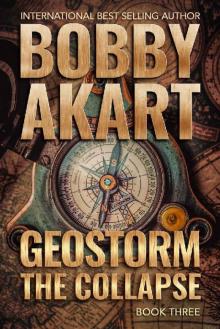 Geostorm The Collapse: A Post Apocalyptic EMP Survival Thriller (The Geostorm Series Book 3)
Geostorm The Collapse: A Post Apocalyptic EMP Survival Thriller (The Geostorm Series Book 3)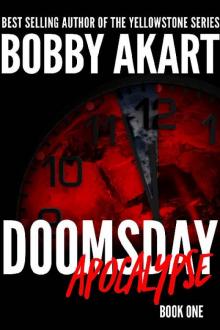 Doomsday Apocalypse
Doomsday Apocalypse Nuclear Winter Desolation: Post Apocalyptic Survival Thriller (Nuclear Winter Series Book 5)
Nuclear Winter Desolation: Post Apocalyptic Survival Thriller (Nuclear Winter Series Book 5)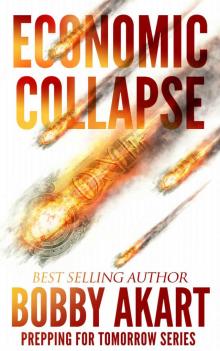 Economic Collapse (Prepping for Tomorrow Book 2)
Economic Collapse (Prepping for Tomorrow Book 2) Nuclear Winter Armageddon
Nuclear Winter Armageddon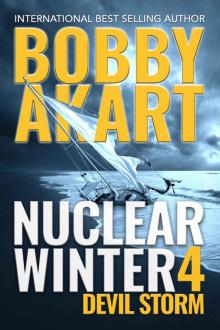 Nuclear Winter Devil Storm
Nuclear Winter Devil Storm Virus Hunters 3: A Medical Thriller
Virus Hunters 3: A Medical Thriller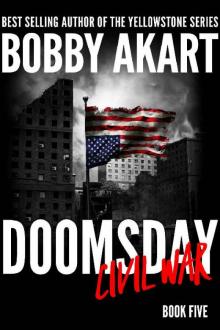 Doomsday Civil War: A Post-Apocalyptic Survival Thriller (The Doomsday Series Book 5)
Doomsday Civil War: A Post-Apocalyptic Survival Thriller (The Doomsday Series Book 5)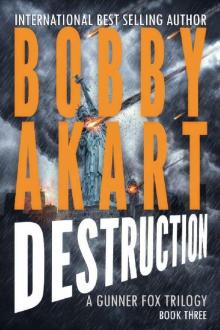 Asteroid Destruction
Asteroid Destruction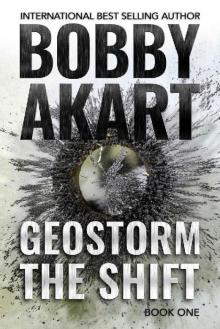 Geostorm the Shift
Geostorm the Shift Asteroid Discovery
Asteroid Discovery Virus Hunters 2: A Medical Thriller
Virus Hunters 2: A Medical Thriller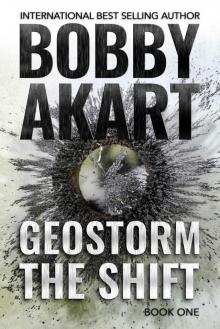 Geostorm The Shift: A Post-Apocalyptic EMP Survival Thriller (The Geostorm Series Book 1)
Geostorm The Shift: A Post-Apocalyptic EMP Survival Thriller (The Geostorm Series Book 1) Asteroid Diversion
Asteroid Diversion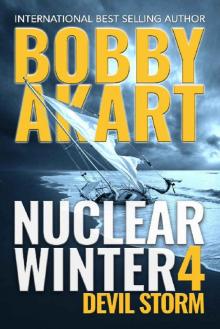 Nuclear Winter Devil Storm: Post Apocalyptic Survival Thriller (Nuclear Winter Series Book 4)
Nuclear Winter Devil Storm: Post Apocalyptic Survival Thriller (Nuclear Winter Series Book 4) Geostorm The Pulse: A Post Apocalyptic EMP Survival Thriller (The Geostorm Series Book 2)
Geostorm The Pulse: A Post Apocalyptic EMP Survival Thriller (The Geostorm Series Book 2)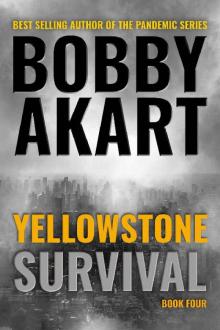 Yellowstone: Survival: A Post-Apocalyptic Survival Thriller (The Yellowstone Series Book 4)
Yellowstone: Survival: A Post-Apocalyptic Survival Thriller (The Yellowstone Series Book 4)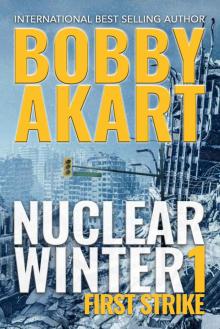 Nuclear Winter First Strike: Post-Apocalyptic Survival Thriller
Nuclear Winter First Strike: Post-Apocalyptic Survival Thriller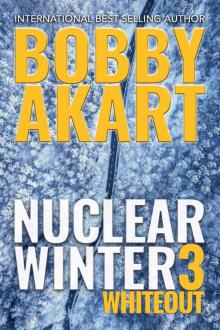 Nuclear Winter Whiteout
Nuclear Winter Whiteout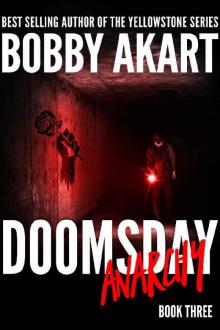 Doomsday Anarchy
Doomsday Anarchy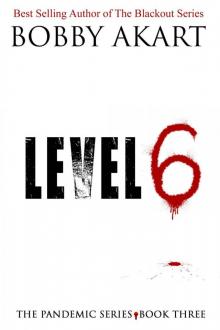 Pandemic: Level 6: A Post Apocalyptic Medical Thriller Fiction Series (The Pandemic Series Book 3)
Pandemic: Level 6: A Post Apocalyptic Medical Thriller Fiction Series (The Pandemic Series Book 3)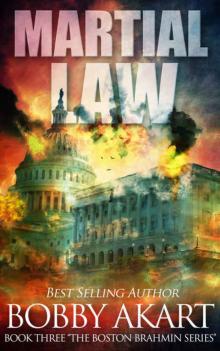 Martial Law
Martial Law Odessa Reborn: A Terrorism Thriller (Gunner Fox Book 4)
Odessa Reborn: A Terrorism Thriller (Gunner Fox Book 4)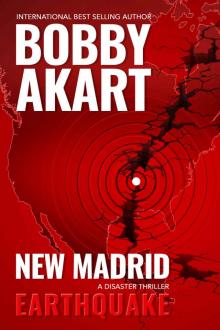 New Madrid Earthquake
New Madrid Earthquake Beyond Borders: Post Apocalyptic EMP Survival Fiction (The Lone Star Series Book 2)
Beyond Borders: Post Apocalyptic EMP Survival Fiction (The Lone Star Series Book 2)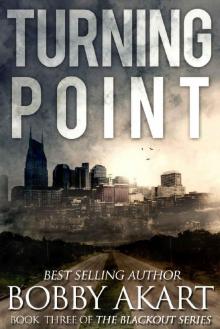 The Blackout Series (Book 3): Turning Point
The Blackout Series (Book 3): Turning Point Patriot's Farewell: A Political Thriller Fiction Series (Boston Brahmin Political Thrillers Book 7)
Patriot's Farewell: A Political Thriller Fiction Series (Boston Brahmin Political Thrillers Book 7)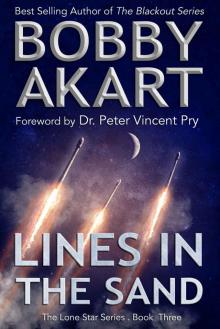 Lines in the Sand_Post Apocalyptic EMP Survival Fiction
Lines in the Sand_Post Apocalyptic EMP Survival Fiction The Mechanics: A Post-Apocalyptic Fiction Series
The Mechanics: A Post-Apocalyptic Fiction Series The Loyal Nine
The Loyal Nine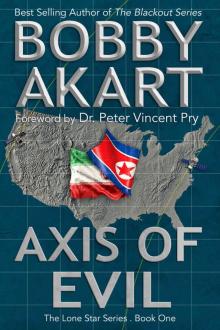 Axis of Evil
Axis of Evil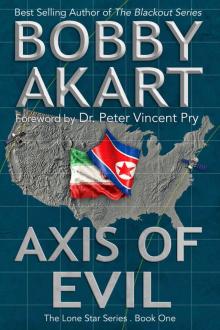 Axis of Evil: Post Apocalyptic EMP Survival Fiction (The Lone Star Series Book 1)
Axis of Evil: Post Apocalyptic EMP Survival Fiction (The Lone Star Series Book 1) Lines in the Sand: Post Apocalyptic EMP Survival Fiction (The Lone Star Series Book 3)
Lines in the Sand: Post Apocalyptic EMP Survival Fiction (The Lone Star Series Book 3) Odessa Strikes
Odessa Strikes The Blackout Series (Book 4): Shiloh Ranch
The Blackout Series (Book 4): Shiloh Ranch Hornet's Nest: A Post Apocalyptic EMP Survival Fiction Series (The Blackout Series Book 5)
Hornet's Nest: A Post Apocalyptic EMP Survival Fiction Series (The Blackout Series Book 5)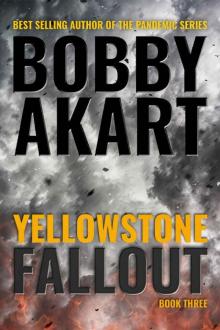 Yellowstone: Fallout: A Post-Apocalyptic Survival Thriller (The Yellowstone Series Book 3)
Yellowstone: Fallout: A Post-Apocalyptic Survival Thriller (The Yellowstone Series Book 3)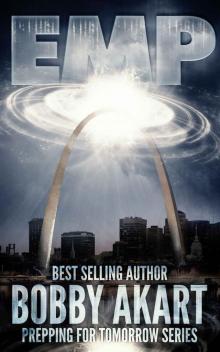 Electromagnetic Pulse
Electromagnetic Pulse Texas Strong: Post Apocalyptic EMP Survival Fiction (The Lone Star Series Book 4)
Texas Strong: Post Apocalyptic EMP Survival Fiction (The Lone Star Series Book 4) Fifth Column_Post Apocalyptic EMP Survival Fiction
Fifth Column_Post Apocalyptic EMP Survival Fiction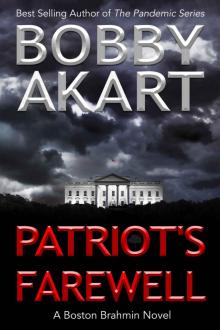 Patriot's Farewell
Patriot's Farewell Texas Strong_Post Apocalyptic EMP Survival Fiction
Texas Strong_Post Apocalyptic EMP Survival Fiction Pandemic: The Innocents: A Post-Apocalyptic Medical Thriller Fiction Series (The Pandemic Series Book 2)
Pandemic: The Innocents: A Post-Apocalyptic Medical Thriller Fiction Series (The Pandemic Series Book 2) Shiloh Ranch: A Post Apocalyptic EMP Survival Fiction Series (The Blackout Series Book 4)
Shiloh Ranch: A Post Apocalyptic EMP Survival Fiction Series (The Blackout Series Book 4)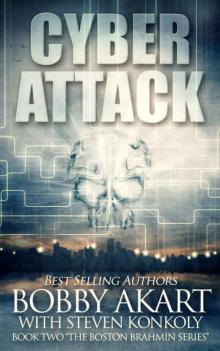 Cyber Attack
Cyber Attack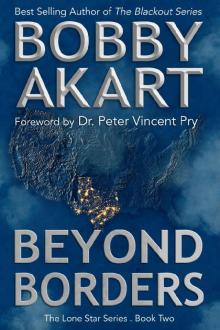 Beyond Borders
Beyond Borders Choose Freedom: A Post-Apocalyptic Fiction Series (The Boston Brahmin Book 6)
Choose Freedom: A Post-Apocalyptic Fiction Series (The Boston Brahmin Book 6) False Flag
False Flag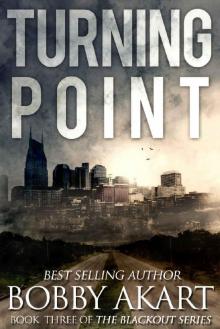 Turning Point: A Post Apocalyptic EMP Survival Fiction Series (The Blackout Series Book 3)
Turning Point: A Post Apocalyptic EMP Survival Fiction Series (The Blackout Series Book 3)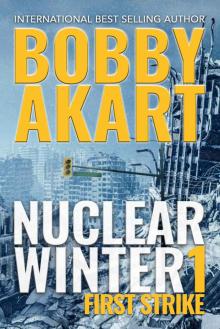 Nuclear Winter First Strike
Nuclear Winter First Strike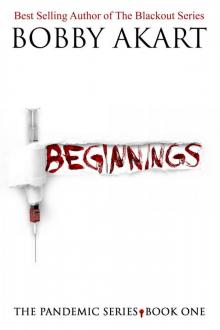 Pandemic: Beginnings: A Post-Apocalyptic Medical Thriller Fiction Series (The Pandemic Series Book 1)
Pandemic: Beginnings: A Post-Apocalyptic Medical Thriller Fiction Series (The Pandemic Series Book 1) Devil's Homecoming: A Post Apocalyptic EMP Survival Fiction Series (The Blackout Series Book 6)
Devil's Homecoming: A Post Apocalyptic EMP Survival Fiction Series (The Blackout Series Book 6) The Blackout Series (Book 6): Devil's Homecoming
The Blackout Series (Book 6): Devil's Homecoming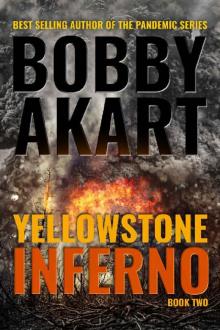 Yellowstone: Inferno: A Post-Apocalyptic Survival Thriller (The Yellowstone Series Book 2)
Yellowstone: Inferno: A Post-Apocalyptic Survival Thriller (The Yellowstone Series Book 2) Fifth Column: Post Apocalyptic EMP Survival Fiction (The Lone Star Series Book 5)
Fifth Column: Post Apocalyptic EMP Survival Fiction (The Lone Star Series Book 5) Yellowstone: Hellfire: A Post-Apocalyptic Survival Thriller (The Yellowstone Series Book 1)
Yellowstone: Hellfire: A Post-Apocalyptic Survival Thriller (The Yellowstone Series Book 1) The Blackout Series (Book 2): Zero Hour
The Blackout Series (Book 2): Zero Hour Suicide Six: Post Apocalyptic EMP Survival Fiction (The Lone Star Series Book 6)
Suicide Six: Post Apocalyptic EMP Survival Fiction (The Lone Star Series Book 6) Suicide Six_Post Apocalyptic EMP Survival Fiction
Suicide Six_Post Apocalyptic EMP Survival Fiction Zero Hour: A Post-Apocalyptic EMP Survival Fiction Series (The Blackout Series Book 2)
Zero Hour: A Post-Apocalyptic EMP Survival Fiction Series (The Blackout Series Book 2)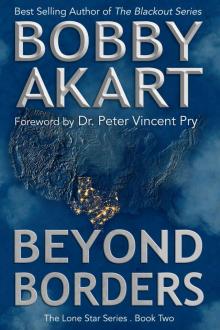 Beyond Borders_Post Apocalyptic EMP Survival Fiction
Beyond Borders_Post Apocalyptic EMP Survival Fiction Pandemic: Quietus: A Post-Apocalyptic Dystopian Fiction Series (The Pandemic Series Book 4)
Pandemic: Quietus: A Post-Apocalyptic Dystopian Fiction Series (The Pandemic Series Book 4)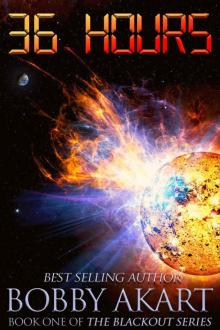 36 Hours: A Post-Apocalyptic EMP Survival Fiction Series
36 Hours: A Post-Apocalyptic EMP Survival Fiction Series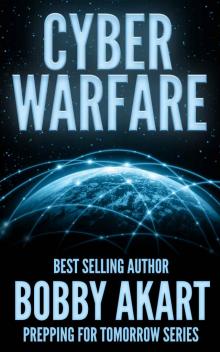 Cyber Warfare
Cyber Warfare